Real estate practitioners and photographers are aware that it is impossible just to Photoshop out the brown grass in the backyard or an ugly, old sofa in the living room. In this case, that would be a sort of misrepresentation of the current state. But creating a brand new look against the old one does not lie about the state of the property. It showcases how it could look, had it been ‘beautified’ a bit. And that’s the main purpose of virtual furniture placement. It’s about conveying the true potential of the home, demonstrating its best selling points, and giving the reasons to see it as “the one” for home buyers. Virtual furnituring especially makes sense for vacant houses.
Judy Dutton, deputy editor at realtor.com states that virtual furniture for real estate is underway right now. It’s not surprising since the technology features so many benefits for the agencies. For example, cost-efficiency. It is way affordable since there’s no need to stage physically a home, rent furniture and get it delivered. No need to hire a stager and a photographer, and then wait for the images. With digital staging, it’s just the matter of a few pics sent to the specialists, recommendations provided, and favorable payment. So, what are the other advantages for real estate photos? Let’s find out.
#1. A Full Customization By The Client’s Requests
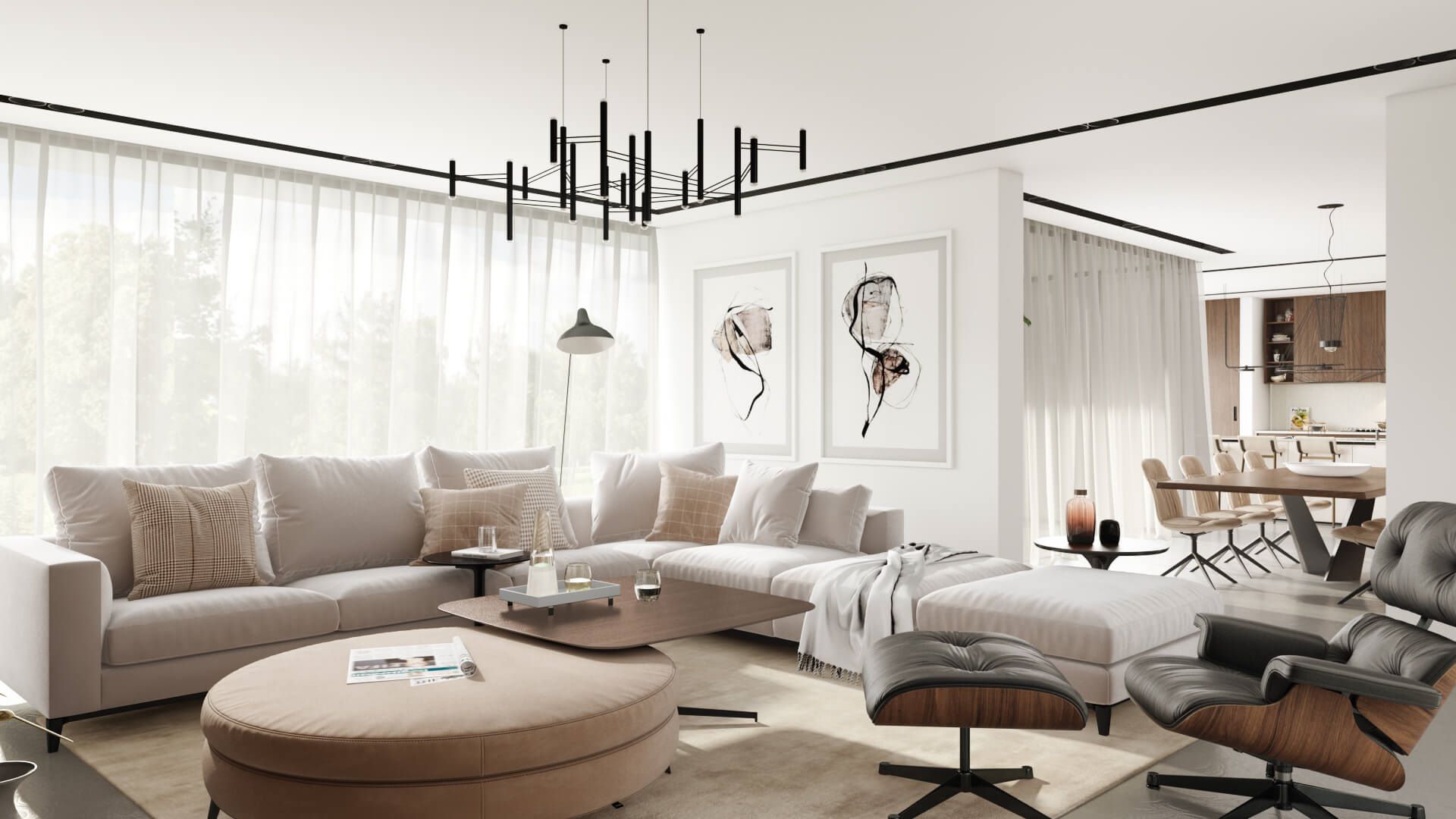
When regarding the whole process of creating virtual furniture for real estate, it looks like this. Realtors send the pictures of the rooms they’d like to be staged to the studio. The latter sends back high-resolution photos, featuring furnishing, accessories, artwork, and flooring in multiple rooms.
The realtors can ask for modifications that are not subject to additional charging – usually, 3D studios make up to 60% of corrections for free. Clients can pick the textures and colors. Or, if it’s more than staging a vacant room, the specialists can change the goal of the space, add, or get rid of built-ins, and so on.
#2. Addressing The Challenge Of The Big Square Foot Space
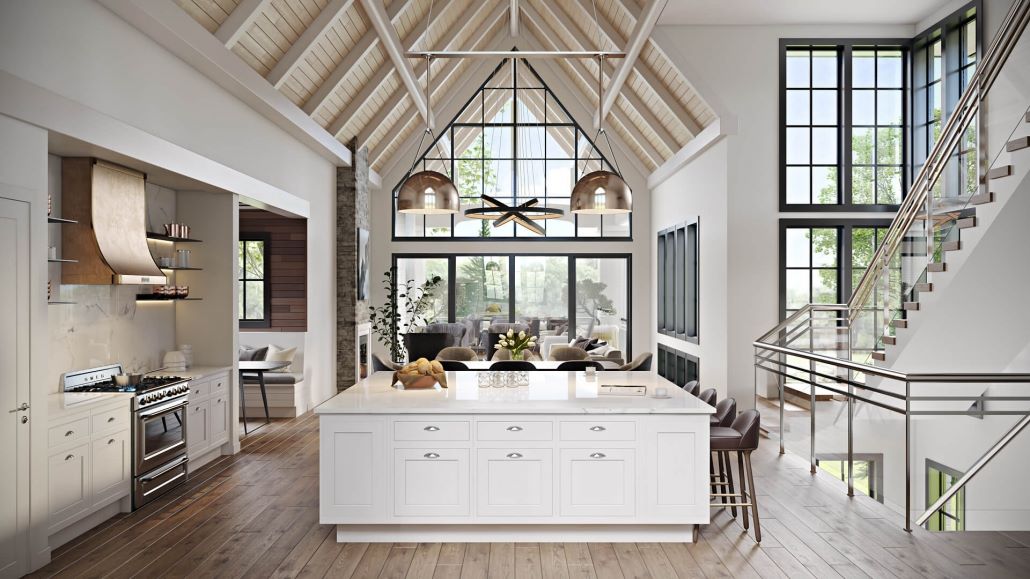
For some buyers, it is incredibly difficult to imagine what life can be in the house of 6000 square foot space. In the meantime, realtors face the challenge with the listing to communicate how people can comfortably reside in such a house. So, virtual furniture for real estate can address this effectively.
The professionals create all furniture true to the scale which allows buyers to envision the room. They simply provide an idea of how they can arrange everything there, and it does work and affects the purchase decision. This way, a lot of luxury real estate with a huge area has the chance to be sold out quickly.
#3. The Ultimate Solution For Landscape Design
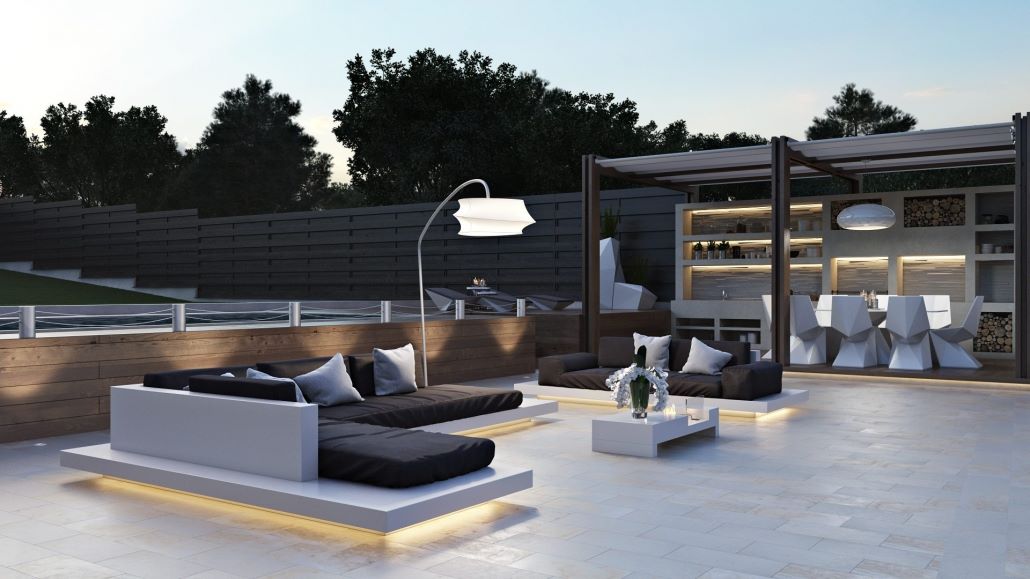
It’s not a secret that buyers also factor in the exterior design of the sale house. Staging this part of the house seems even more problematic than the inside one. But not for the services of virtual furniture for real estate. Virtual landscaping suggests creating a compelling design for the backyard, adding virtually some furniture to create a comfy outdoor lounge, for example. By the way, the same renovation can be applied here if the current outdoor design is wanting.
For example, the problems with plants or beds not fitting into surroundings, or unbecoming water features might ruin the general opinion about the house. Virtual renovation can declutter this area and restyle it – just like it does with the shabby interiors. Finally, over 75% of A-league realtors nationwide say that well-landscaped homes sell better. Although it’s not a real one in the photo, it provides the idea of a possible one. It is better than the picture of an outdated design with light disappointment aftermath.
#4. Handling The “Challenging” Homes
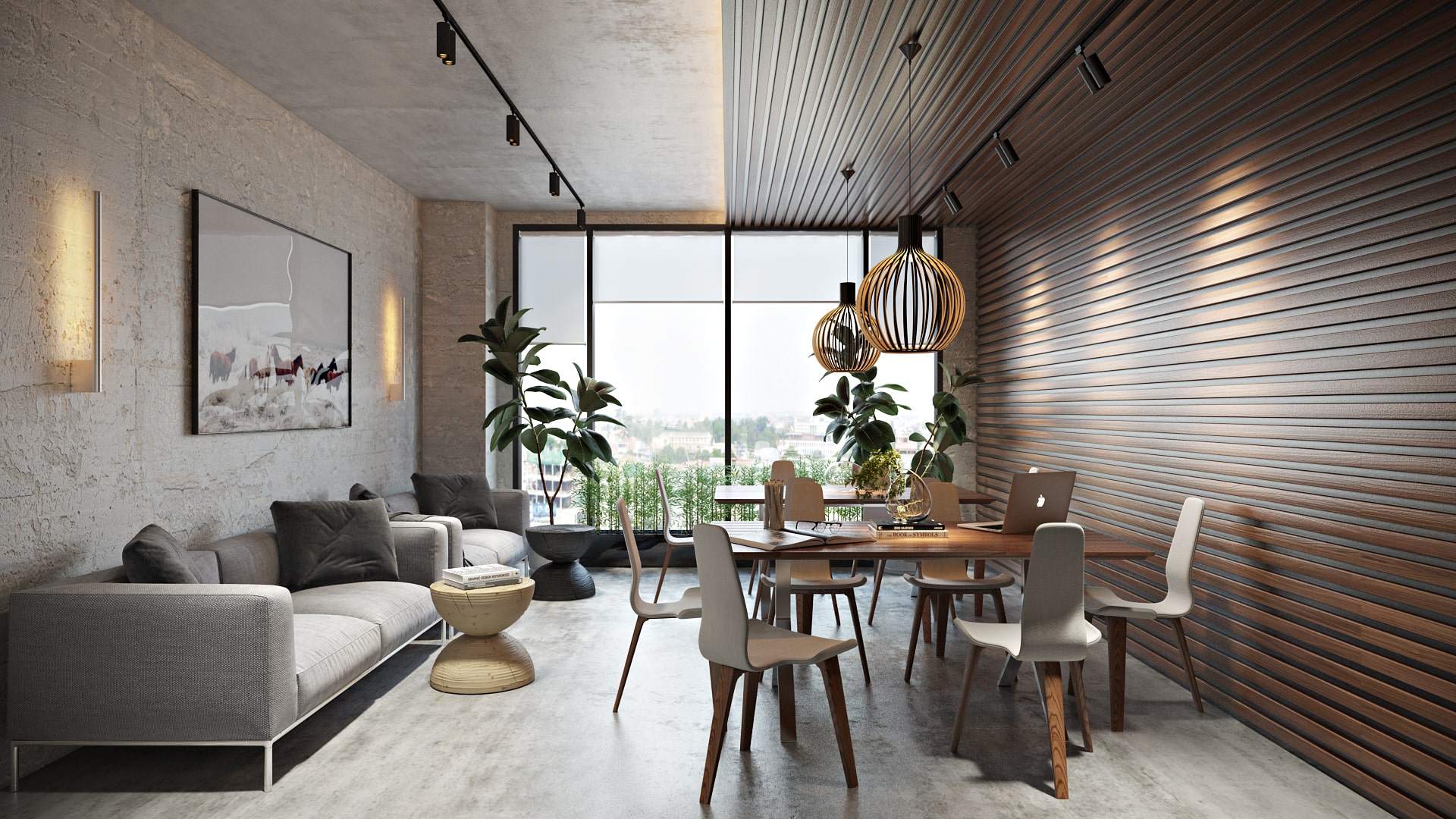
Here’s a common situation realtors often face. There’s a challenging house because of the layout whose sale price yet needs to be maximized. One of the case scenarios for the specialists might be using a huge formal living room as an ideal canvas for virtual furniture for real estate. They could divide it into a couple of rooms and make them themed and dedicated.
Otherwise, an ordinary staging wouldn’t be capable of demonstrating the usability of that space. Buyers, in their turn, wouldn’t be able to visualize themselves in the home. By the way, realtors can go further and show these photos not just from laptops but print them out for open houses and showings.
#5. The “Contrast Trick” That Always Works
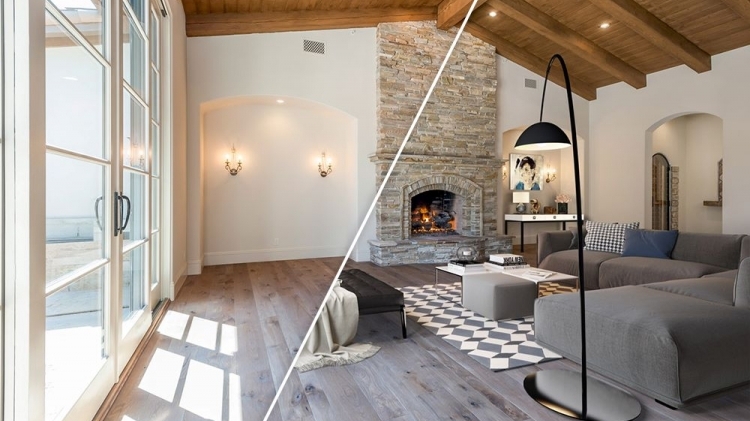
When creating virtual furniture for real estate, professionals provide a sort of contrast. In any marketing, it always pays off. And this contrast might be even dramatic and tap into the buyers’ emotions. Now, they can see how modern decorating trends and colors can easily revamp the ambiance of the house. And the listings with the before and after state have more chances to hit home for the potential owners than the photos of empty rooms.
In fact, this kind of visuals unfolds other advantages for realtors. These are the education on current trends in design or even upper-fixer, landscape design, ideas for as-is property renovation, and so on. To sum up, a contrast thing is always a powerful tool when it’s about communicating the object’s selling points.
#6. A Powerful Solution For As-is Property
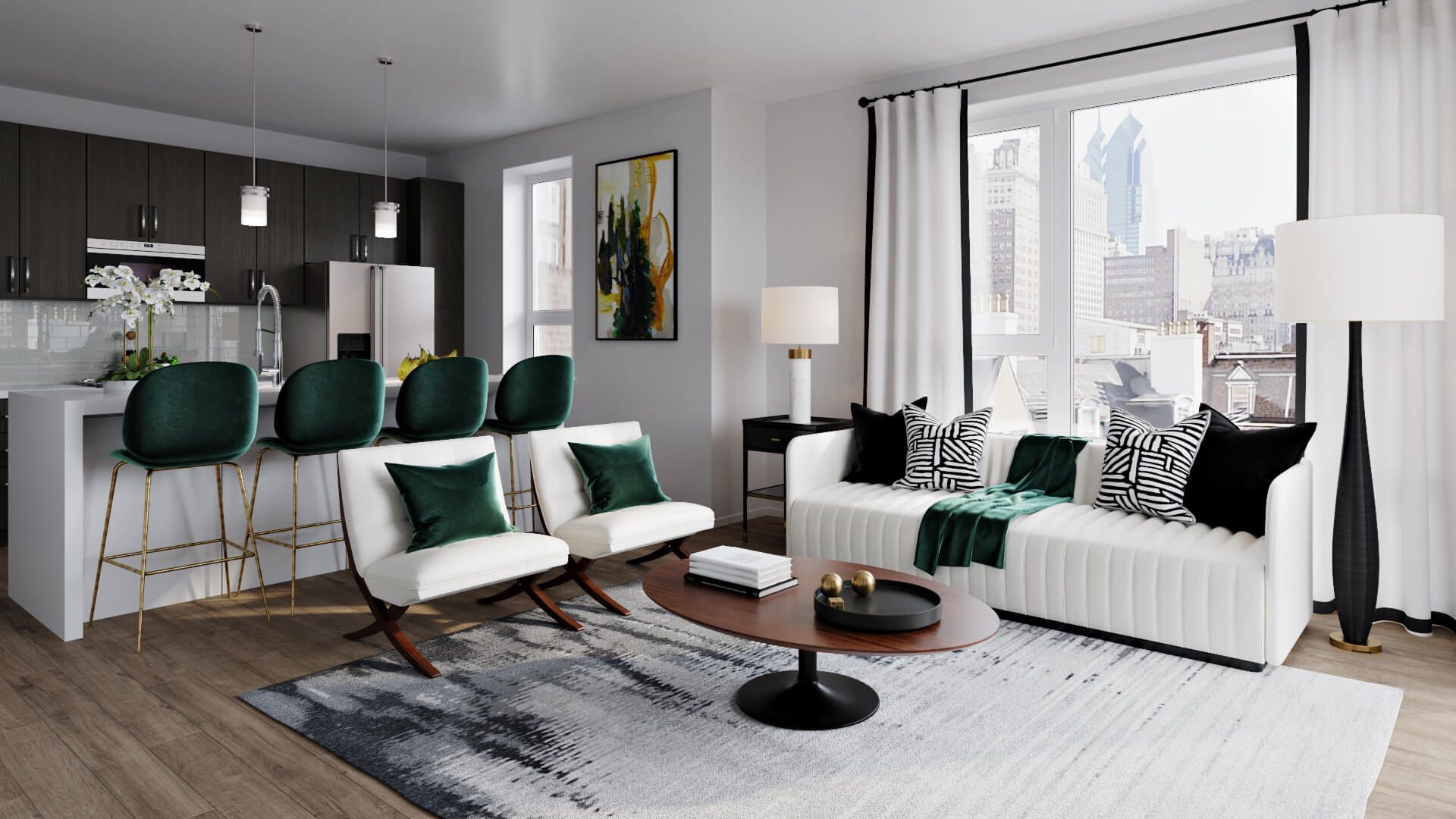
Luckily, the services providing virtual furniture for real estate also include digital renovation. It is designed to help prospects see the hidden potential and positive selling points of the house. The technique allows decluttering the rooms, removing outdated stuff, and changing the shabby space digitally. The latter means repainting the walls, reflooring, adding some new furniture, and so on.
Understandably, it’s the as-is type of property that benefits the most from the technology. Usually, homeowners do not want to invest in repairs but to cash in as soon as possible. Yet, for potential buyers, such a home looks absolutely unattractive. And that’s a virtual renovation that helps out significantly and saves the listings’ photos.
#7. Demonstrating Flex Spaces In The Best Way
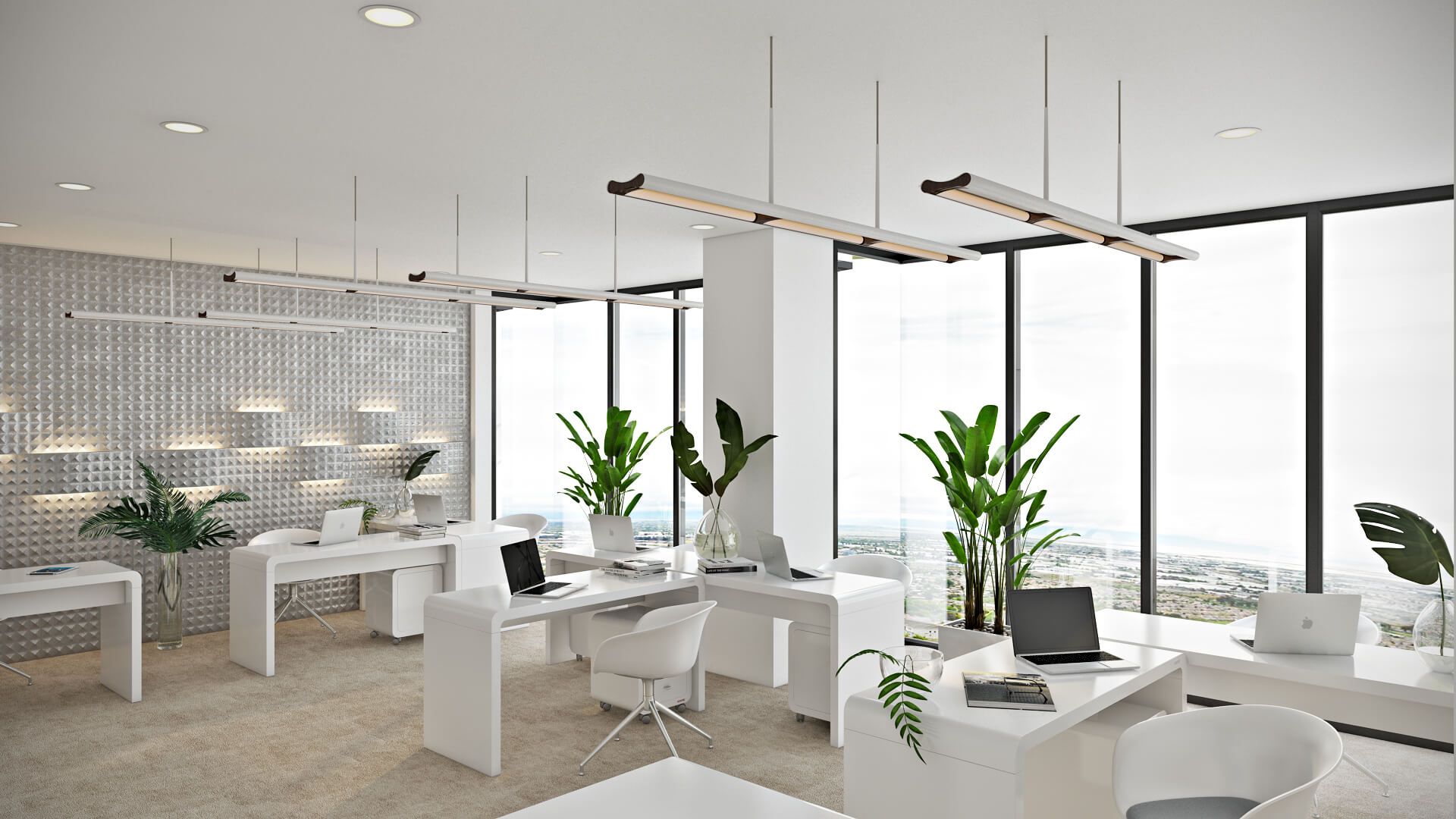
Flex spaces are zones of the house that might have multiple functions. They usually have walls and come as “bonus rooms”. Also, they can be open space or adjacent to other formal rooms. This kind of space is not identified traditionally since it might lack in closets or plumbing there. But it can also be a subject to any design idea implementation, which is easily tackled with virtual furnituring for real estate photos.
So, the professionals can create here a home office, cozy library, chic bar, or private gym. In physical staging, arranged flex spaces add value to a property and help sell it faster. Considering time and cost-efficiency and the creative capacity of the digital one, imagine how great the listings’ photos will look like!
Virtual furniture for real estate is currently well-endorsed by top realtors as the ultimate technology to sell the property faster. The photos coming out from it definitely outshine the ones with empty rooms. Besides, virtual staging addresses timely so many specific challenges real estate agents face in their business. These are challenging homes, as-is property with outdated interior and poor landscaping, wide, open, and flex spaces, and so on. But the icing on a cake is always a price, which is $60-$100 per photo compared with $2500-$3000 physical staging expenditures.
Willing to give it a shot and use digital staging services for your photos? You’re in the right place! Just pitch us right now, and we’ll create astonishing visuals for your business.

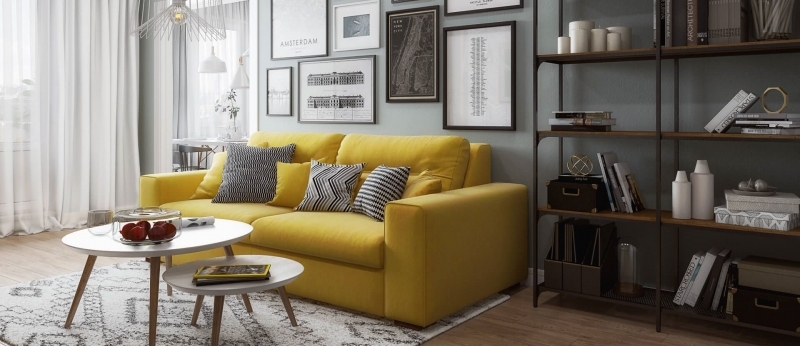
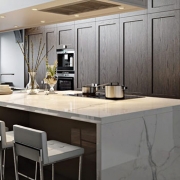
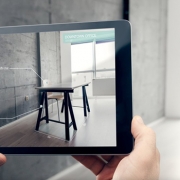
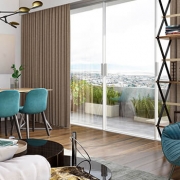
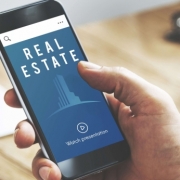
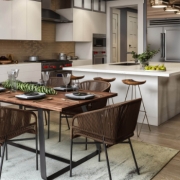
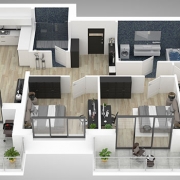


Leave a Reply
Want to join the discussion?Feel free to contribute!